NAM Co-Hosts Second Annual North American Manufacturing Conference
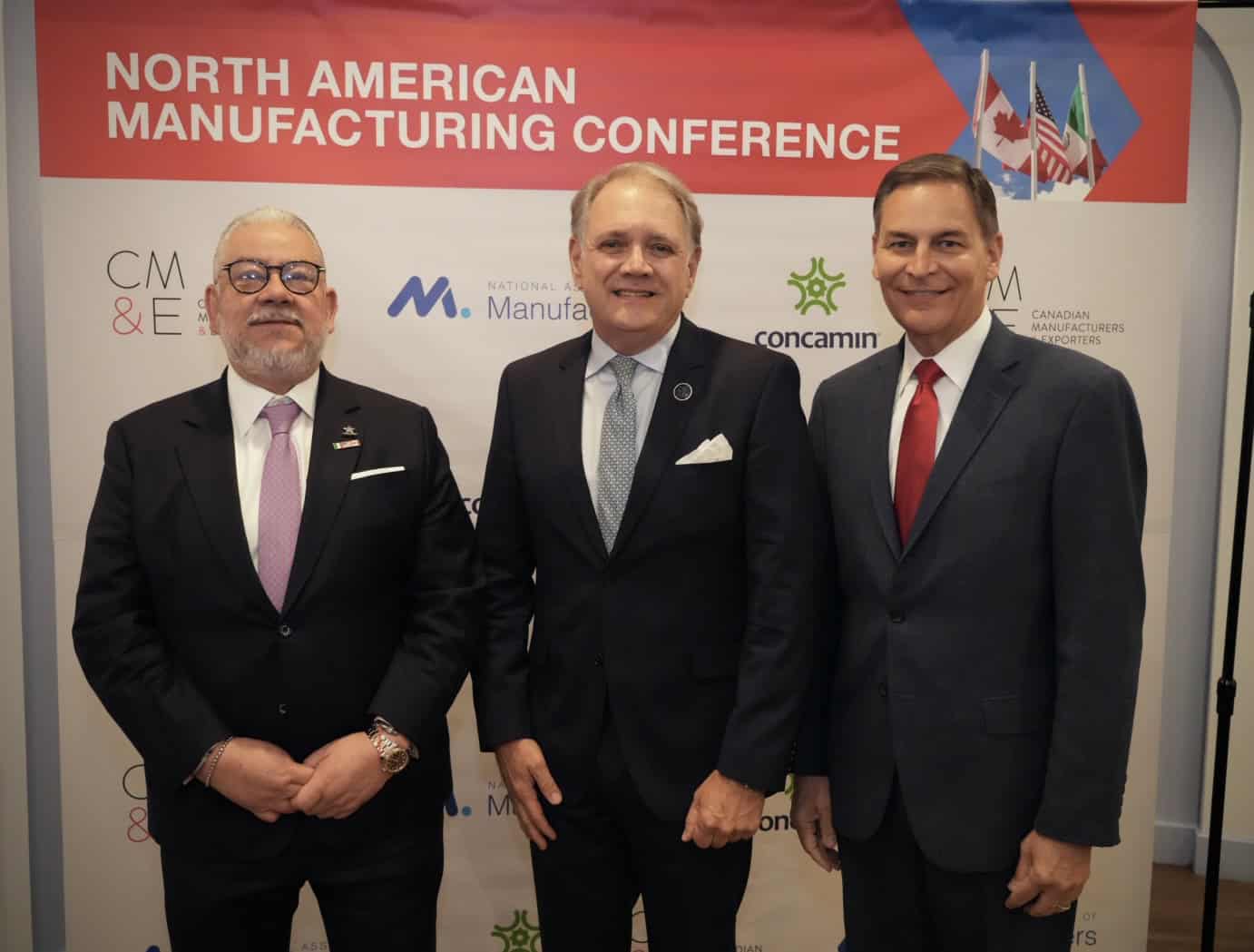
The NAM co-hosted the 2024 North American Manufacturing Conference on Tuesday and Wednesday in Ottawa, Canada, along with the Canadian Manufacturers & Exporters and the Confederation of Industrial Chambers of Mexico. This year’s conference kicks off the NAM’s advocacy push ahead of the expected review of the United States–Mexico–Canada Agreement.
Well-timed: The conference was timely, as President-elect Trump on Wednesday night announced his nomination of former U.S. Rep. Pete Hoekstra (R-MI) as the next U.S. ambassador to Canada—and touted the USMCA.
- Said NAM President and CEO Jay Timmons following the news: “We appreciate [President-elect Trump]’s foresight in prioritizing the U.S.–Canadian relationship and negotiating the USMCA, a trade deal that has been essential to the strength and success of manufacturing across North America. We look forward to working with [Hoekstra] as the next U.S. ambassador to Canada.”
- The conference also came just a day before significant news from Mexico: that its lower house of Congress approved a spate of constitutional reforms proposed earlier this year by former President Andrés Manuel López Obrador.
- Some of the reforms—which include the dismantling of several independent public regulatory agencies and restrictions on U.S. participation in the energy sector—appear to violate Mexico’s obligations under the USMCA.
“A crucial moment”: “[T]his conference is happening at … a crucial moment,” Timmons told event attendees on Tuesday. “We need to be clear-eyed about what we’re up against as we forge a more resilient and stronger North American manufacturing economy. Our associations and companies are at the vanguard. It will be up to us to make the case for vibrant economic ties and trade between our countries.”
Strong trade ties needed: The USMCA was a main topic at the conference, which consisted of multiple panel discussions and fireside chats with officials, experts and journalists from the U.S., Mexico and Canada.
- In talks on Tuesday with reporters from CNN and Canada’s Globe and Mail, Timmons highlighted the results of a recent joint NAM–CME-CONCAMIN survey. It found that “86% of [North American] manufacturers expressed strong support for extending the CUSMA/USMCA/T-MEC agreement when it comes up for review.”
- The conference’s panel events focused on different aspects of the USMCA. Speakers on one panel talked about key opportunities and challenges for the agreement in a shifting global landscape, while those on another keyed in on the effectiveness of the USMCA four years after its inception.
Speaker list: Event speakers included ExxonMobil Senior Vice President and NAM Executive Committee member Neil Chapman, U.S. Department of State Acting Assistant Secretary of Economic and Business Affairs Amy Holman, CONCAMIN President Alejandro Malagón Barragán, Canadian Minister of Innovation François-Philippe Champagne, CEMEX Vice President of Corporate Affairs Carlos Garza Galán, veteran POLITICO reporter Doug Palmer and many others.
- NAM Vice President of International Policy Andrea Durkin moderated a panel on the USMCA review. It featured Martinrea International Executive Chairman and Co-Founder Rob Wildeboer, 3M Government Affairs Head for the United States and Canada Elise Maheu and Xignux Public Affairs and Institutional Relations Director for the United States Iván Rivas.
- “The review is a novel mechanism in a trade agreement,” Durkin said after the conference. “Manufacturers in North America base their long-term plans on the benefits of the USMCA. They want the three governments to avoid a scenario that creates significant business uncertainty.”
Ministerial meetings: Timmons—who appeared Wednesday on CBC News’ “Power & Politics” to discuss the likely impact of the U.S. elections on North American trade—also spoke one-on-one to Canadian Minister of Labor and Seniors Steven MacKinnon and Minister of Energy Jonathan Wilkinson.
- Timmons thanked MacKinnon for the Canadian government’s intervention in the recent bicoastal Canadian port strikes, which reopened the points of entry, as well as his intervention to end a rail stoppage in the country.
- In his discussion with Wilkinson, Timmons told the energy minister the U.S. and Canada should “build cross-border relationships” to share access to critical minerals and materials including copper, lithium, uranium and graphite.
The final say: “North America’s integrated manufacturing system is the envy of the world,” Timmons said at the event. “We hold a competitive edge globally—and we can keep it if our governments stay true to the commitments set forth in the USMCA.”
How Manufacturers Can Save Millions Through Incentives Programs
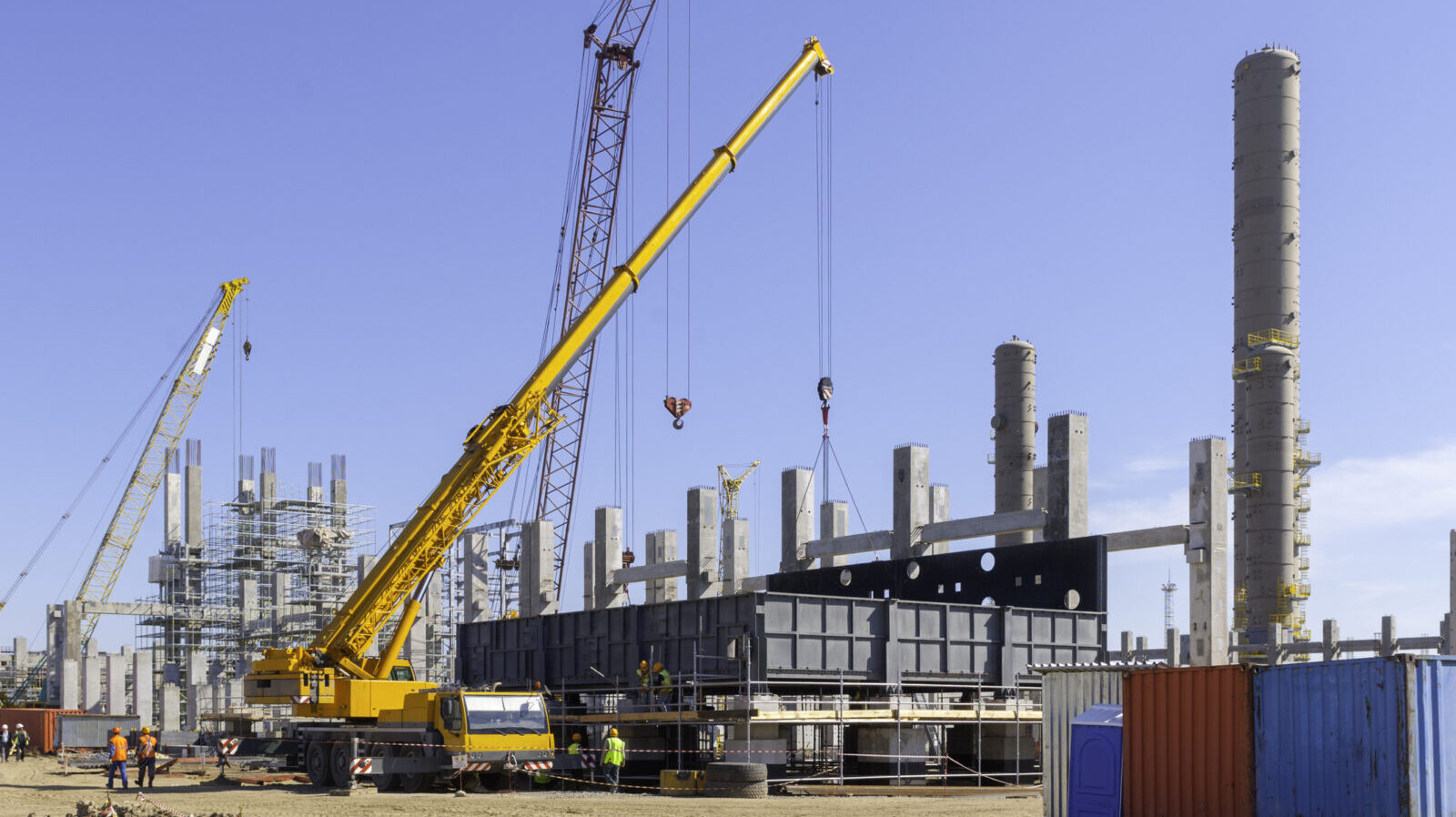
“$80 billion is given away every year in state and local incentives,” according to Atlas Insight Managing Partner Brian Corde. “Plus, the Biden administration has added $455 billion just in federal grants.”
In this investment landscape, manufacturers need all the help they can get finding, applying for and complying with these incentive programs. Atlas Insight, the NAM’s partner for its Incentives Locator, walks companies through this entire complicated process.
Last week, we talked to Corde and Kathy Mussio, Atlas’s other managing partner, about how companies select their new sites. This week, we’ve asked them what manufacturers need to know about incentives.
How do incentives work? Incentives come in two forms, Corde and Mussio explained. First is the type you automatically qualify for if you meet the requirements, known as statutory or as-of-right incentives.
- The second is the type that Atlas lends its expertise to—discretionary incentives. These programs offer funds and other pools of money that require business cases, negotiation, applications, and later, proof that a company has met its stated obligations (also known as compliance).
- These programs can take many forms. As Mussio put it, “Some states have programs that offer cash to help close the financial gap between two competing locations or increase a project’s ROI—helping to make a location more competitive in the financial analysis.”
- There are many, many incentives out there, the Atlas partners told us, and the most important steps are understanding which ones a company may be eligible for and helping clients quantify the potential savings.
What if you’re staying put? These incentives aren’t just for new facilities, Corde and Mussio emphasized. “A majority of incentives are given to companies staying in place,” Corde added.
- Companies can take a lot of actions to qualify for incentives—expand their workforces, buy new equipment, train workers in new technologies or add square footage for new production lines.
- “It’s our job to help NAM members identify their projects that could use incentives. Then we benchmark the incentives, then negotiate on the companies’ behalf, then lock the incentives down with the state or city,” Corde said.
What’s benchmarking? Atlas compares incentive offers from states and localities with the incentives awards that similar companies have received in the past, another way to help ensure that their clients get the best possible deals. There’s always room for negotiation, the partners say.
- Atlas keeps two databases: the first, a listing of all the incentives that exist on the federal, state and local levels, along with all the necessary forms, key contacts and any other requirements. The second database is a list of what other companies have received for similar types of projects.
- This allows Atlas to identify the typical dollar range that an incentive should provide—so a company knows whether it has been offered a good deal, and whether it should negotiate, or even go elsewhere.
How do you get the money? After companies successfully secure an incentive award, they must follow compliance schedules to ensure they keep receiving the funds as project milestones are met, while also retaining documentation in case of audit.
- The government offering the incentive typically requires filings to verify how many employees were hired, the wages they earned, even the employers’ contributions to health insurance premiums.
A lot to lose: “We are being conservative when we say that 50% of incentives awarded never pay out,” Corde said, all because companies fail to fulfill compliance requirements.
How can Atlas help? Atlas creates a “holistic incentive management for its clients, for the entire life of the incentive,” so that companies actually receive their money, the partners explained. It even helps with old incentives that remain incompletely documented.
- “When we retained Atlas, it enabled us to bring several one-off incentive agreements around the U.S. into a centralized process,” said a Schneider Electric spokesperson. “That made it so much easier for us to document our part of the expansion agreements and collect the incentives we were owed. Plus, their performance-based fee for this process has been best in class.”
How to get started: The NAM Incentives Locator is a service for NAM members, which provides a complimentary initial assessment call and preferred rates on contracted services, including an exclusive success-based fee schedule.
- Atlas is often “only paid for successful outcomes, either a confirmation letter or when the company receives the money over time. We will help you be successful and then benefit once you are,” said Corde.
The bottom line: “You need to have a strategy to go after these incentives, because your competitors are.”
Lucid Revs Up the Domestic Graphite Supply Chain
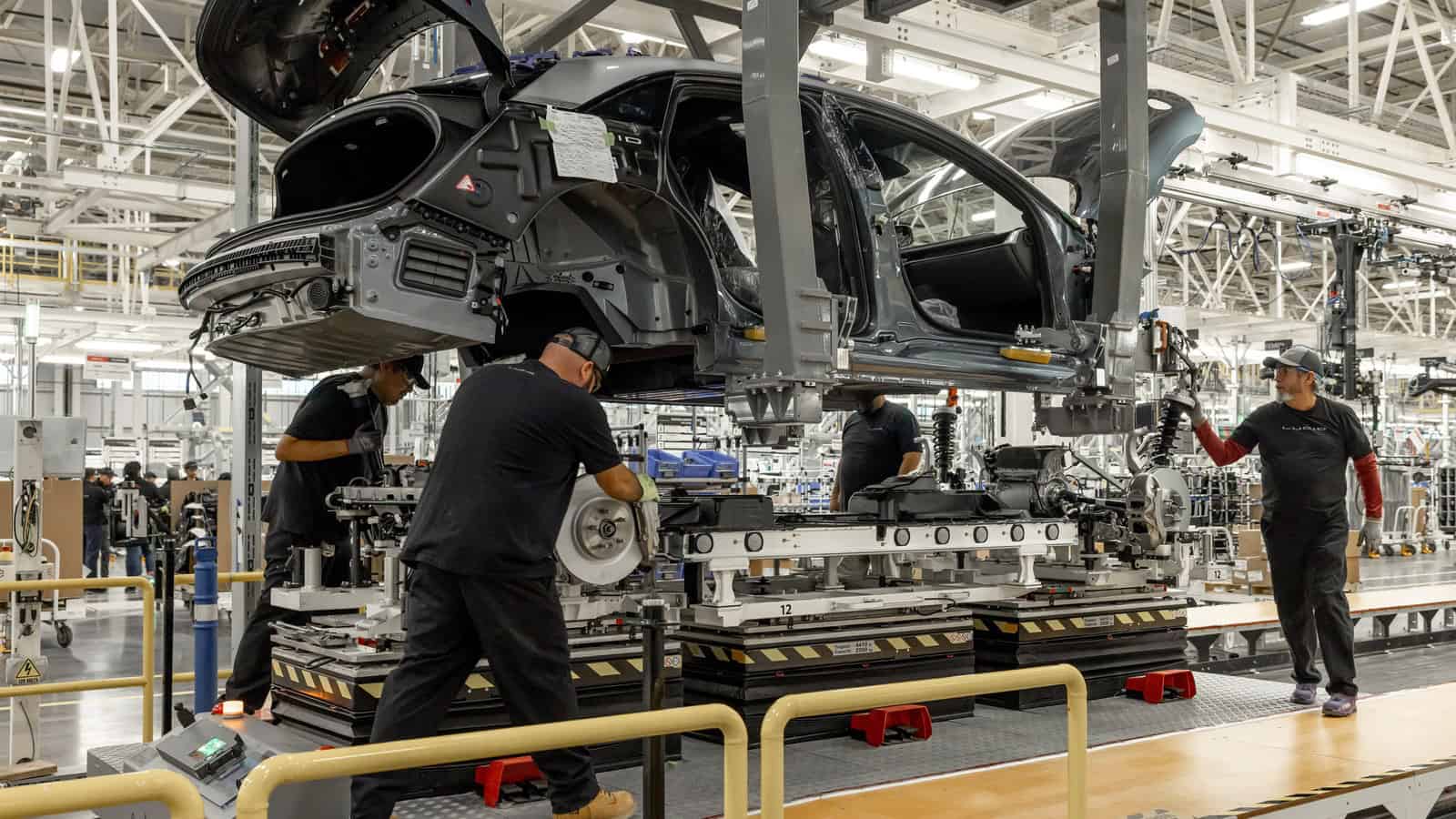
Lucid has already made one of the most energy-efficient cars on the market. Now the company is on a mission to strengthen supply chains for the critical materials powering its award-winning vehicles.
Supply chain warrior: The California-based electric vehicle manufacturer—whose 2025 Air Pure sedan is the first EV to achieve a milestone 5 miles of range per kilowatt of energy—recently reached an agreement with Alaskan mining exploration company Graphite One to purchase synthetic graphite for its vehicles’ battery packs.
- The deal, which goes into effect in 2028, is a crucial first step toward cementing a domestic supply chain of graphite, a mineral that makes up about half of every EV’s battery composition. EV batteries require both synthetic and natural graphite.
- “Today 100% of the graphite for batteries assembled in the U.S. comes from overseas,” said Lucid Motors Supply Chain Group Manager of Battery Raw Materials Michael Parton. “Building a robust domestic supply chain ensures the United States and Lucid will maintain technology leadership in this global race.”
Pandemic lesson: The global pandemic revealed the downside of depending on other nations for critical materials, and the importance of cultivating domestic sources instead.
- In 2020, “every company experienced major challenges when it came to shutdowns and global trade,” Parton said. “Having a domestic supply reduces production risk, accelerates response time and agility and lowers the need to carry higher levels of inventory.”
A midstream gap: When it comes to EV batteries and their supply chains, “much of the discussion is on localizing the bookends of the supply chain, the downstream battery production and the upstream mineral extraction,” Parton told us.
- Less discussed is the “midstream environment,” which comprises the precursor cathode active materials (P-CAM) and cathode active materials (CAM) stages. Materials used during these phases in the battery production process include critical minerals such as lithium, nickel and cobalt.
- The P-CAM market has been a difficult one to navigate, Parton added. For years, the P-CAM stage has been outsourced to countries with more cost-effective production. The problem: These countries also have less stringent environmental regulations than the U.S.
- “There’s limited investment announced [in the U.S.] in the refining and chemical conversion process at these stages, but it’s where the real need is,” Parton continued. “To promote localized sources of supply for mined and recycled minerals, there needs to be a domestic option for both P-CAM and CAM.”
A bipartisan issue: Lucid’s advocacy for a strong domestic supply chain has won bipartisan support in Congress.
- “There’s something in it for everyone when it comes to efficiency,” said Lucid Motors Senior Manager of International and Trade Policy Emily Patt, citing the environmental and self-sufficiency benefits of a resilient domestic supply chain.
What’s next: Lucid is expanding its vehicle lineup beyond the Air and the vehicle’s four trim levels.
- By the end of 2024, the company is scheduled to start production of the seven-passenger Lucid Gravity. The company has also teased an upcoming midsize platform, which is expected to start production in late 2026.
The grand vision: “The pursuit of efficiency drives Lucid as a company,” Patt said. “We’re not just making zero-emission cars; we’re committed to making the best use of the world’s resources to maximize the benefits for electrification and the planet.”
How Manufacturers Find Workforces for New Sites
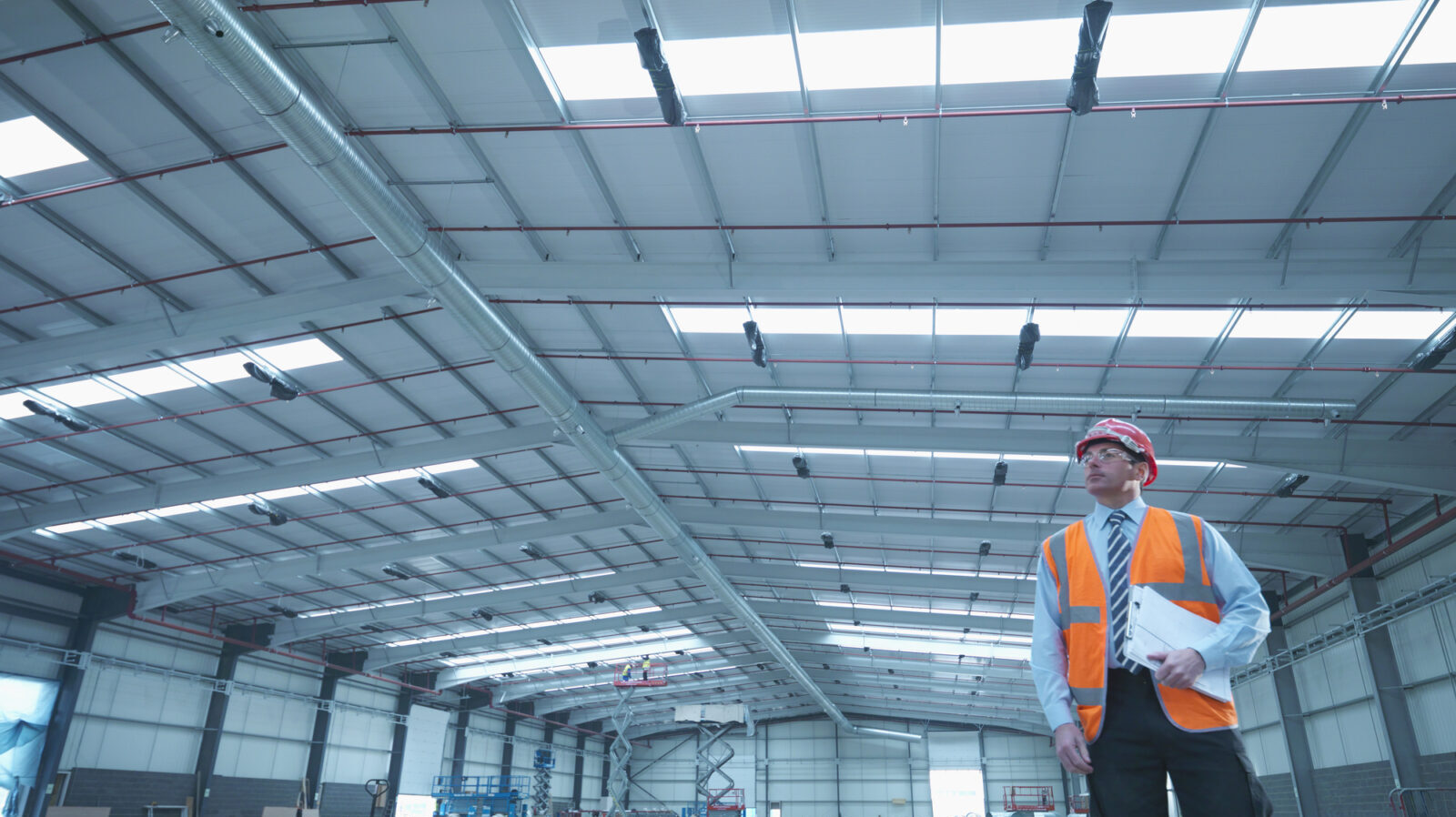
When a manufacturer is thinking about pouring millions or billions of dollars into a new facility, its leaders have a million or billion questions to go with it. Atlas Insight, the NAM’s partner for its Incentives Locator, helps manufacturers answer the biggest question—where?—with a combination of on-the-ground research, data gathering, relationship-building and more.
We talked to Atlas’ managing partners, Brian Corde and Kathy Mussio, who offered us a peek into this crucial process. Here’s what they had to say.
The “number-one factor”: While manufacturers typically prioritize access to raw materials and customers when choosing new sites, over the past 10 years the “number-one factor” for manufacturers has been talent, said Corde. How do you evaluate a workforce for jobs that don’t yet exist?
- First, Atlas looks for locations that already have companies in the same sector as its client, which is an indication of a local pool of talent.
- It then combs through a huge amount of data, including metrics like employment concentration (how likely are you to find a specific job function in that area?), local demographics (is the population expanding or contracting?) and much more.
Decoding the data: Let’s say an area had 500 people working in nonwoven textiles in 2018, Corde posited, but only 250 today; does that mean a new company in that sector won’t find the talent it needs?
- Not necessarily, he told us. While it could mean that workers with those skills have moved out of town, it may also indicate that an existing factory closed, forcing employees to find other lines of work. If a new textile facility opens, they might decide to return to their old industry.
- How does Atlas figure out if those workers might come back? One strategy is to have researchers scour the resumes posted on internet job boards—the more local job seekers who list textile experience, the more likely a new facility will find a skilled and eager workforce.
Drawing on local relationships: Just as important to the data crunching are Atlas’ ties to the local economies, Corde and Mussio said. Atlas has relationships with economic developers all over the country, giving it unparalleled insight into what’s happening in those communities.
- Ten years ago, Mussio said, these organizations might not have needed to find workers for new companies, but today they are in the workforce business—and some are even offering incentives to attract more residents to their communities.
Workforce training: Manufacturers also take a keen interest in local training programs when choosing sites and have many options for partnering with them, Corde said.
- In some cases, a company pays for colleges and tech schools to train their workers, in a simple cash deal. But other states, like Virginia, South Carolina and Georgia, will fund the training on a “preemployment basis” and allow prospective employers to observe the class before recruiting any of its students. That way, employers can observe soft skills before they even begin the hiring process.
Searching for sustainability: While their workforces might be top of mind, companies also prioritize sustainability when selecting their new sites. Some may look for natural gas, some nuclear, some solar—the configuration will be different for every manufacturer and every location, Corde and Mussio said.
- One large company was looking for a new location where it could build an enormous field of solar panels to support its operations. Atlas informed the company that some local governments might be reluctant to give them so much land, which could otherwise host another business.
- These types of considerations may not occur to a company, which is why Atlas stands ready to explain local concerns to manufacturers, as well as vice versa.
- In the end, the manufacturer did indeed get its solar field.
Take the plunge: If you are looking for expert guidance in your next site search, check out the NAM Incentives Locator. NAM members will receive a complimentary initial assessment call with an expert and a preferred rate on any services contracted—not to mention the benefit of the exhaustive and proprietary database that Atlas has created to assist with manufacturing projects.
Stay tuned . . . for part two, in which we discuss how Atlas helps companies get significant funding from local, state and federal incentives for their projects.
Ports Negotiations Break Down
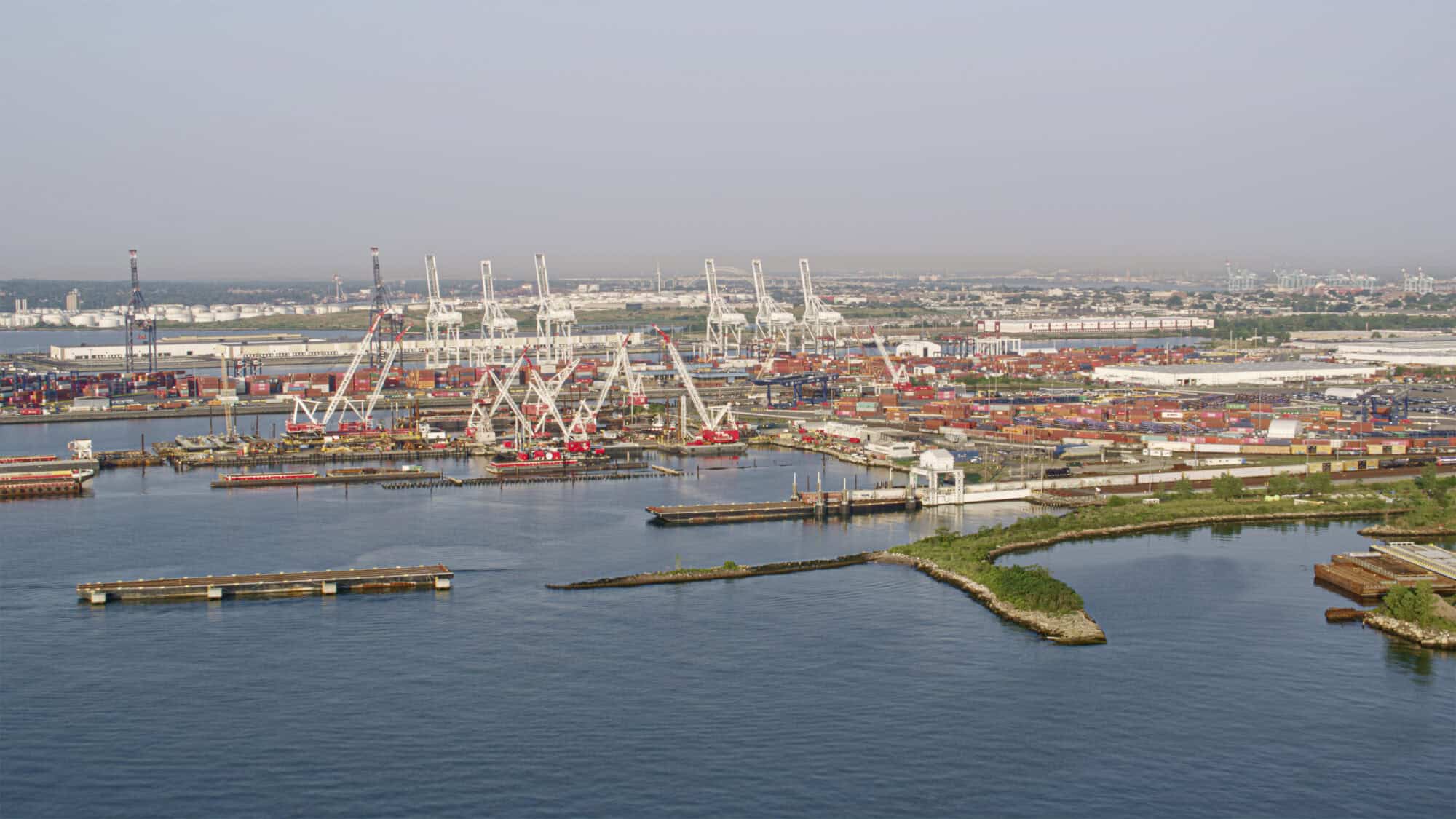
Negotiations between the U.S. Maritime Alliance and the International Longshoremen’s Association have stalled again, “raising the possibility of renewed strikes at U.S. East and Gulf Coast ports in January” (gCaptain).
What’s going on: Talks between the dockworkers and their employers broke down this week over proposed language regarding the use of automation, according to the ILA.
- “This impasse follows a tentative agreement reached in early October, which ended a three-day strike across Atlantic and Gulf Coast ports” and extended the workers’ labor contract until Jan. 15, 2025.
- If the parties are unable to reach a long-term agreement by that date, the union could strike again.
Why it’s problematic: Even a brief work stoppage could have major economic consequences, according to widely cited NAM estimates.
- A strike at East and Gulf Coast ports would jeopardize $2.1 billion in trade every day and could reduce gross domestic product by up to $5 billion a day.
What must be done: “These ports are critical components of the manufacturing supply chain and move products on which Americans depend,” said NAM Director of Transportation, Infrastructure and Labor Policy Max Hyman. “Both sides should return to negotiations as soon as possible and reach a lasting resolution that prevents needless economic destruction.”
Nominations Open for the 2025 Manufacturing Leadership Awards

Nominations for the Manufacturing Leadership Council’s flagship awards are now open.
What’s going on: The Manufacturing Leadership Awards—given annually by the MLC, the NAM’s digital transformation arm—honor manufacturing companies and leaders for the groundbreaking use of digital manufacturing. Those interested in submitting company and/or individual names for consideration for the 2025 awards can do so through Jan. 17, 2025.
- Awards will be given in nine project categories and three individual categories. New for 2025 are Business Model Transformation (for projects) and Women in Manufacturing 4.0 (for individuals).
How they’re evaluated: For the individual categories, the judges—a panel of established digital manufacturing experts from outside the MLC—assess whether nominees have advanced digital transformation at their companies and whether they meet the criteria for being role models to other manufacturing leaders.
- For the project categories, judges evaluate how each undertaking improved manufacturing processes, furthered business goals and advanced company strategy.
What happens next: Finalists will be notified in March 2025 and announced shortly afterward. Winners will be announced at the Manufacturing Leadership Awards Gala next June.
- “The Manufacturing Leadership Awards give the MLC the chance each year to honor some of the remarkable people and endeavors in manufacturing today,” said MLC Senior Content Director Penelope Brown. “We look forward to reviewing the nominations and learning more about the incredible innovation taking place in our industry.”
Get involved: Have a person or project in mind for the 2025 Manufacturing Leadership Awards? Submit their names here.
- MLC members receive one complimentary project entry and one complimentary individual entry.
Inflation Ticks Up

Inflation rose again last month (The Wall Street Journal, subscription).
What’s going on: The consumer price index increased 0.2% in October, the fourth consecutive increase (Bureau of Labor Statistics).
- “[P]rices were up 2.6% from a year earlier, in line with economists’ expectations. Core inflation, at 3.3%, also matched forecasts,” according to the Journal.
The details: Shelter prices rose 0.4% in October, accounting for more than half the increases overall (BLS).
- Food prices inched up 0.2%, while energy prices were unchanged after having declined 1.9% in September.
What it means: The news strengthened investor confidence that the Federal Reserve will cut rates in December for the third time this year in an effort to hit its 2% inflation goal, the Journal reports.
- “The October CPI report will likely support the notion that the last mile of inflation’s journey back to target will be the hardest,” Wells Fargo economists wrote in a memo to clients (USA Today).
WIN’s First Event Is a Roaring Success

The inaugural “Empowering Women’s Leadership in Manufacturing” event was a smash hit.
What’s going on: The newly minted Women in National Association of Manufacturers—a group composed of women executives at NAM member companies—gathered for the first time last month at Johnson & Johnson’s World Headquarters in New Brunswick, New Jersey.
- Headlining the event were Johnson & Johnson Executive Vice President and Chief Technical Operations and Risk Officer (and NAM Board Chair) Kathy Wengel and Cornerstone Building Brands President and Chief Executive Officer (and NAM Executive Committee member) Rose Lee.
- NAM Executive Vice President of External Affairs Erin Streeter also spoke at the event, conducting a conversation with New Jersey State Senator Linda Greenstein, who is a co-chair of her state’s manufacturing caucus.
The background: WIN arose out of discussions among several women leaders on the NAM’s executive committee, including Wengel and Lee, who hosted introductory sessions at the NAM’s spring and fall board meetings. The goals of the new group include:
- Amplifying the voice of women leaders in manufacturing advocacy;
- Supporting professional growth for women in manufacturing; and
- Promoting the growth of women executives in NAM membership.
The word from Wengel: At the October event, the Johnson & Johnson leader paid homage to the women of J&J who led critical operations for the organization over 100 years ago.
- “During World War I, Edith H. led a team of 140 women—running J&J’s sterile suture manufacturing operation round-the-clock to meet demand for our products on the front lines,” Wengel said.
- “Yes, we’ve come a long, long way [since WWI],” she continued, “but all of us know there’s still so much more we want and need to accomplish.”
- “With WIN, we want to transform the industry as a whole—creating momentum for meaningful reforms to policy and corporate culture that support professional growth for all women in manufacturing.”
A conversation with Lee: After her speech kicking off the event and introducing WIN, Wengel conducted a dialogue with Cornerstone President and CEO Lee, who also stressed the importance of spotlighting women’s experiences in manufacturing.
- “For most of us it’s been a long and sometimes tough journey,” Lee said. “But once we get here, it can be easy for some of the hard realities of the journey to fade as we deal with day-to-day challenges of running our company, division, business or team.”
- “For WIN to be effective, we need to stay in touch with the front lines where we make our great products, and with what the customers want and need. We also need to support and lift up one another to be the most effective women in manufacturing today,” she added.
Why it’s important: “Our companies are better, our industry is better, the world is better when women are an equal part of the leadership team and decision-making process,” Wengel said. “Everybody wins when we have more women in manufacturing leadership positions.”
Get involved: If you are a female leader in manufacturing, WIN is eager to hear your perspective. Please take the survey here to tell us your views on supporting women throughout the industry.
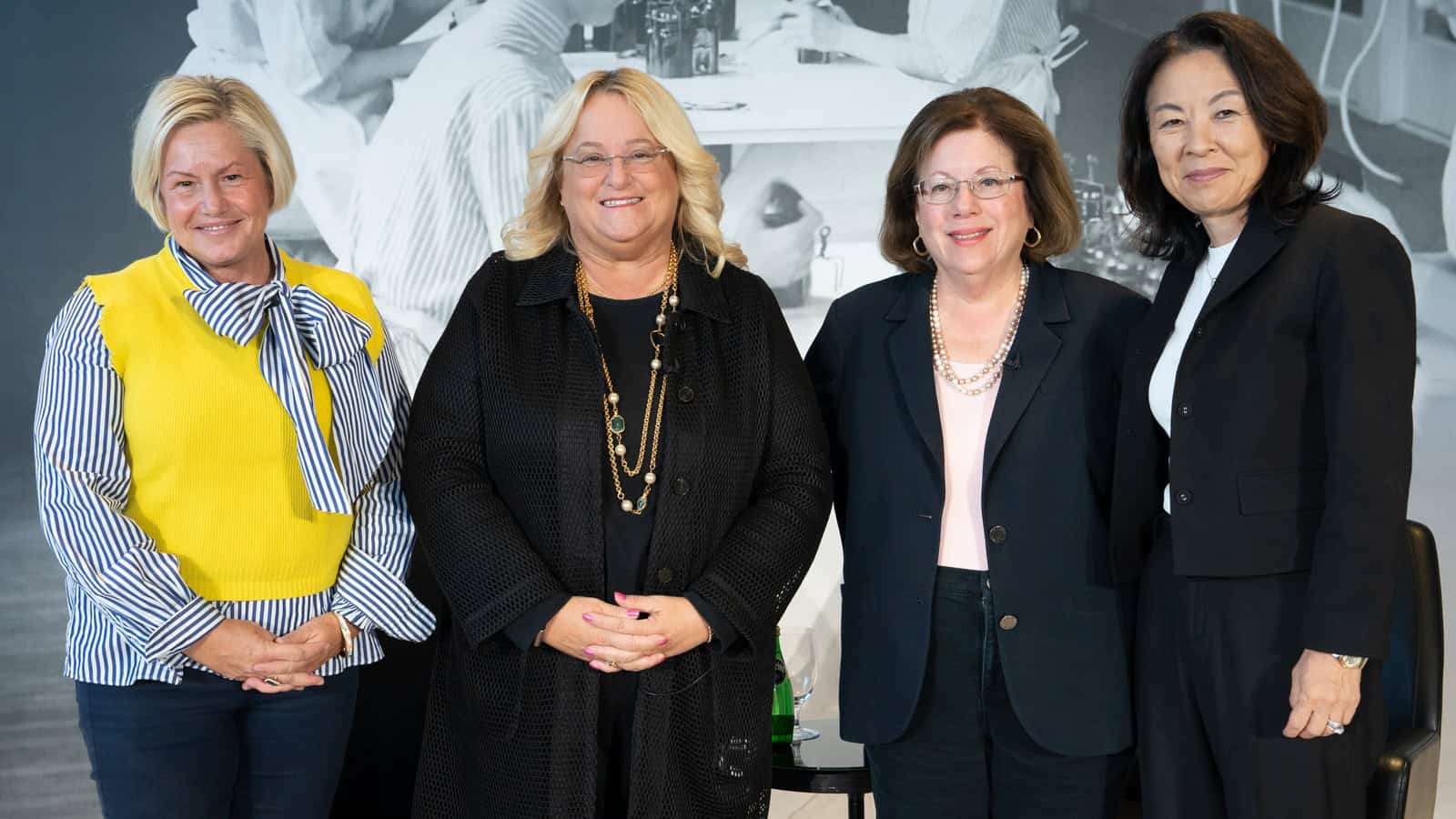
Manufacturer Sentiment Declines

Manufacturer sentiment fell in the third quarter of this year, according to the NAM’s Q3 2024 Manufacturers’ Outlook Survey, out Wednesday.
What’s going on: Results of the survey, which was conducted Sept. 5–20, reflect “preelection uncertainty,” NAM President and CEO Jay Timmons said—but also larger economic concerns.
- “The good news is that there is something we can do about it,” said Timmons. “We will work with lawmakers from both parties to halt the looming tax increases in 2025; address the risk of higher tariffs; restore balance to regulations; achieve permitting and energy security; and ease labor shortages and supply chain disruptions.”
Key findings: Notable data points from the survey include the following:
- Some 62.9% of respondents reported feeling either somewhat or very positive about their business’s outlook, a decline from 71.9% in Q2.
- A weaker domestic economy was the top business challenge for those surveyed, with 68.4% of respondents citing it.
- Nearly nine out of 10 manufacturers surveyed agreed that Congress should act before the end of 2025 to prevent scheduled tax increases on manufacturers.
- The overwhelming majority—92.3%—said the corporate tax rate should remain at or below 21%, with more than 71% saying a higher rate would have a negative impact on their businesses.
- More than 72% said they support congressional action to lower health care costs through the reform of pharmacy benefit managers.
The last word: “When policymakers take action to create a more competitive business climate for manufacturers, we can sustain America’s manufacturing resurgence—and strengthen our can-do spirit,” Timmons said.
- “This administration and Congress—and the next administration and Congress—should take this to heart, put aside politics, personality and process and focus on the right policies to strengthen the foundation of the American economy.”
Solving the Talent Equation at the MI’s Workforce Summit
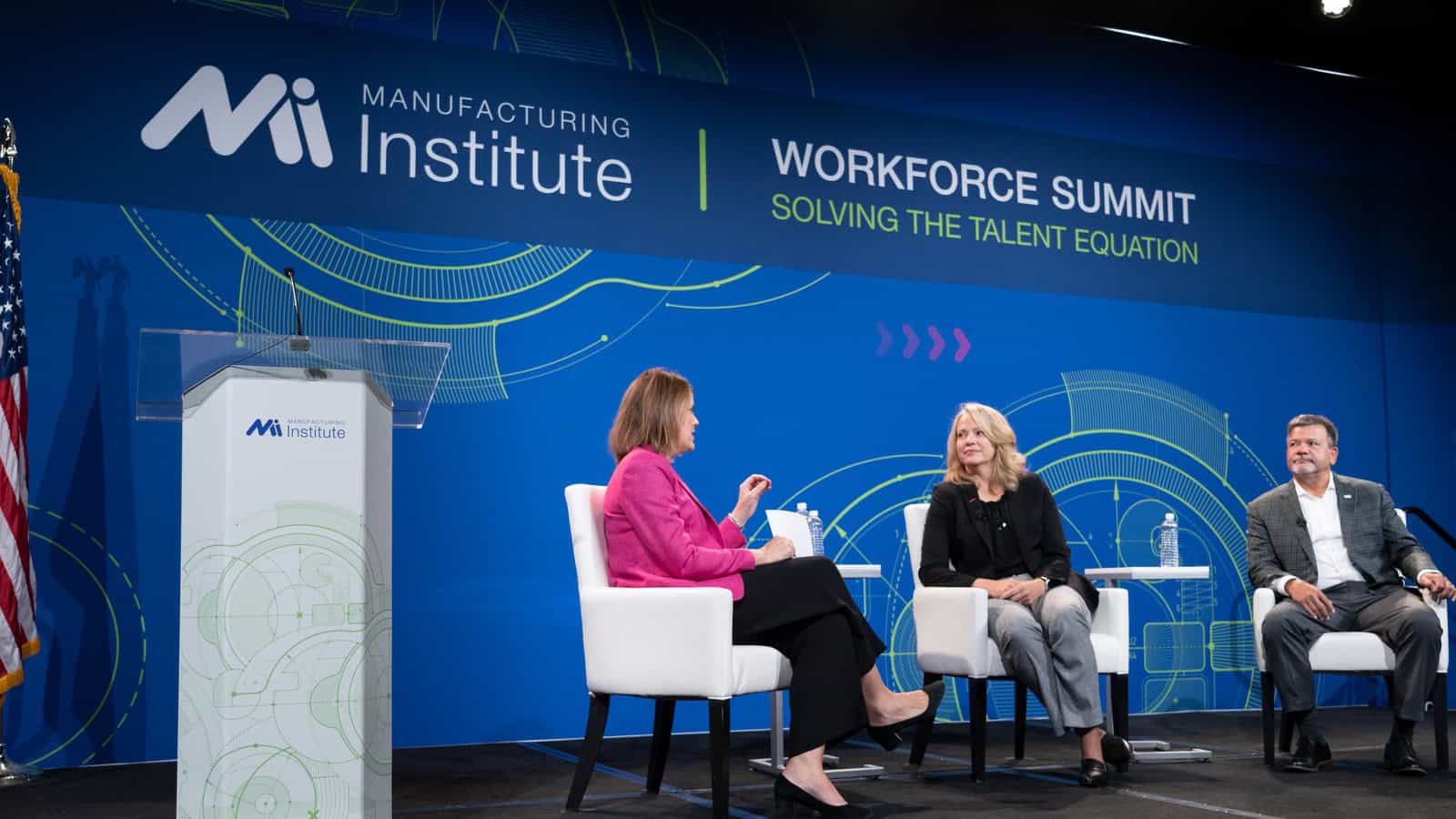
More than 300 leaders and experts gathered in Minneapolis last week to discuss the industry’s talent challenges, from hiring to training and retaining. The Manufacturing Institute’s annual Workforce Summit convened manufacturers, partners from education and training groups, philanthropy leaders and representatives from community-based organizations to share insights and brainstorm solutions.
The backdrop: With more than 500,000 open jobs in the industry, manufacturing leaders are intent on solving the talent equation.
- MI Chief Program Officer Gardner Carrick provided context for attendees. “For the last 7+ years, manufacturers have told the MI that the single biggest challenge they face is finding the right people to employ,” he said. “It is the crisis right in front of us.”
- Carrick urged attendees to “act now, because the system needs help.” However, he also noted that this crisis will take time to fix, saying that manufacturers should “be patient, but be committed.”
Quick insights: The participants brought many new ideas and fresh perspectives to the gathering. Here are some of the highlights:
- Recruitment and hiring: NTT DATA led a session on artificial intelligence technologies that can help with talent attraction, while other sessions focused on changing Americans’ perceptions of the industry and demonstrating that manufacturing is a “cool” field to work in.
- Retention: Mark Rayfield, CEO of Saint-Gobain North America and CertainTeed, highlighted the importance of culture as a retention tool, saying, “Culture is everything. Employees want to work for a place where they are respected.” In a separate session, Jill Wyant, president and CEO of Madison Air, shared why their cultural value of frontline obsession guides how they attract and retain their frontline employees.
- Training: One session focused on training frontline supervisors in methods that boost retention of frontline workers. Other sessions focused on using the FAME USA model (of combined accreditation and training) to cultivate talent for manufacturing facilities.
- Preparing the next generation: Ketchie Inc.’s Andy Silver spoke about the company’s Opportunity Knocks program, an unpaid internship program for high school students that offers real-world learning experience and mentorship. Programs like these can transform young people’s perceptions of the manufacturing industry and set them on rewarding career paths, as Silver noted.
Did you miss it? Don’t worry! There are plenty of ways to get involved in the solutions being driven by the MI, the NAM’s 501(c)3 workforce development and education affiliate.
- Check out the MI’s Solutions Center, a new initiative that will provide manufacturers innovative resources and opportunities to access solutions and best practices on how to tackle the challenges of recruiting, training and retaining talent in today’s competitive landscape. Attendees got a first look, but now we’re sharing it with everyone.
- Get updates directly from the MI on the latest workforce insights and receive information about registering for next year’s Workforce Summit in Charlotte, North Carolina, taking place Oct. 20–22, 2025.
- Want more labor data and insights? Sign up for the MI’s comprehensive Workforce in Focus newsletter to stay up to date on the latest workforce trends.
The last word: “The MI and manufacturers across the country are changing the narrative, raising awareness and finding new ways to get people in the door and retain them,” said MI President and Executive Director Carolyn Lee. “As we face workforce shortages and retention challenges, events like the MI’s Workforce Summit are necessary to help the industry share important insights and ensure the readiness of the future manufacturing workforce.”
